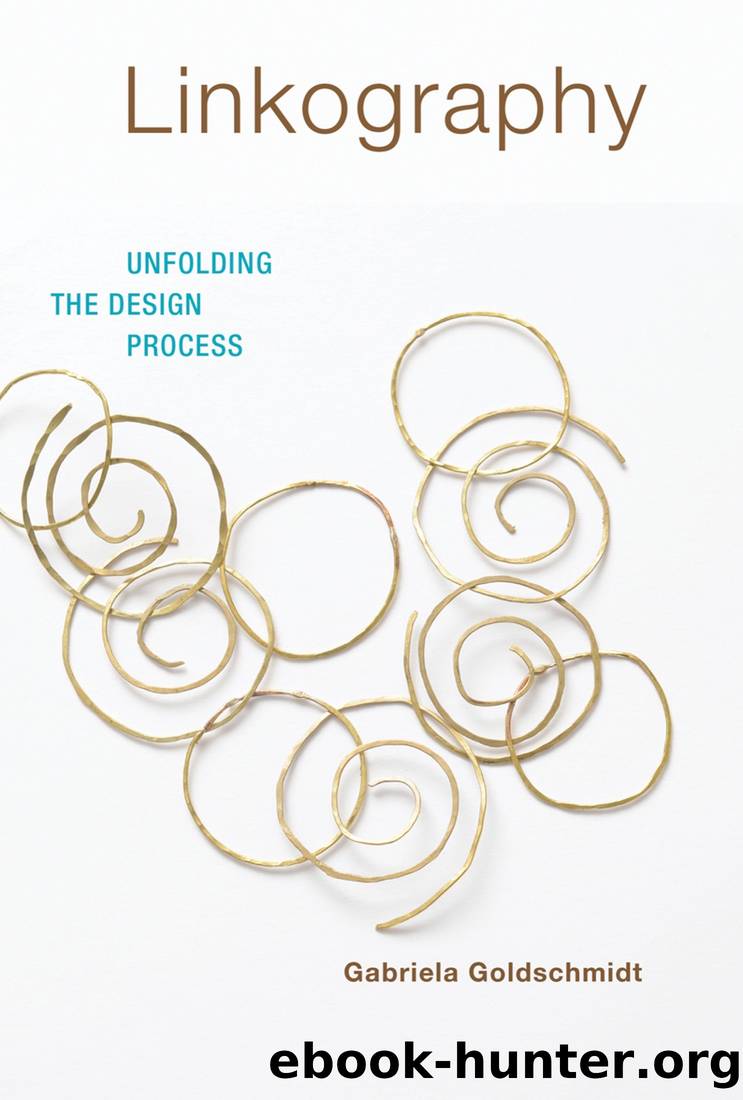Linkography by Gabriela Goldschmidt

Author:Gabriela Goldschmidt [Goldschmidt, Gabriela]
Language: eng
Format: epub
Tags: Design, History and Criticism, Computers, Social Aspects, Human-Computer Interaction
ISBN: 9780262027199
Publisher: MIT Press
Published: 2014-09-15T00:00:00+00:00
Figure 5.6
Linkograph of episode from Gilbertâs design process, branch library design exercise.
Move 3 My sense would be that we could build on top of the walls. You could say that you have so much of the wall started, letâs build on top of it and go with that. My sense would be that would not be a good decision to make for several reasons. One, you donât know about the actual structural integrity of the walls. So letâs not do that. Two, no matter what we do, itâs never going to match. If the wall has been built for some period of time, when we come in and stack new stuff on it, it isnât going to match even if we had the exact same builder. Plus, when you take a wall thatâs 2â6â high and 20 feet long, itâs like âWhy bother?â
Later the walls led to the establishment of a grid that was to become the foundation of the library design, but Gilbert was satisfied with a lengthy analysis and did not actively engage is arriving at a design solution.
The low performance indicators appear to reflect Gilbertâs interpretation of his role, which yielded loosely interlinked bits of commentary that were not integrated into a whole.
Gideon
Gideon, a practicing architect, was oriented toward solutions, probably as a result of his daily experience in practice. Like Gilbert, Gideon was presented with the âLibrary IIâ task. The library he imagined was a simple wooden structure with a hearth and a prominent chimney. The space within the library would be flooded with light coming through a glass wall and through windows in the roof (skylights).
The linkograph of an episode from his process, shown here in figure 5.7, includes 64 movesâone more move than Gilbertâs episode. However, Gideonâs moves are interconnected with a much larger number of links: 80. There is also a fair number of critical moves, eight of them at the level of CM4. Structurally, however, Gideonâs linkograph does not offer more clarity than Gilbertâs, and well-defined groupings of highly interlinked moves cannot be discerned. 5 The fact that all the critical moves other than the last are CMs> tells us that Gideon kept advancing new ideas, but there is no evidence that they resulted in firm decisions before the process moved on to new concerns. An exception is move 18, to which the sole <CM in the linkograph (move 57) backlinks. Move 18 is interesting because at a lower level (CM3) it is critical in both directions, thus having a bit more of a structural role in the process:
Download
This site does not store any files on its server. We only index and link to content provided by other sites. Please contact the content providers to delete copyright contents if any and email us, we'll remove relevant links or contents immediately.
| Decorative Arts | Design History & Criticism |
| Furniture Design | Industrial & Product Design |
| Interior & Home Design | Jewelry Design |
| Textile & Costume |
POP by Steven Heller(3307)
Japanese Design by Patricia J. Graham(3108)
The Power of Broke by Daymond John(2896)
Architecture 101 by Nicole Bridge(2763)
Indistractable: How to Control Your Attention and Choose Your Life by Nir Eyal(2331)
Fusion 360 for Makers by Lydia Sloan Cline(2308)
Batik by Rudolf Smend(2123)
Actionable Gamification: Beyond Points, Badges, and Leaderboards by Yu-kai Chou(2122)
Origami Art by Michael G. Lafosse & Richard L. Alexander(2064)
Homebody by Joanna Gaines(2030)
Whiskey in a Teacup by Reese Witherspoon(1935)
Worn in New York by Emily Spivack(1926)
Feng Shui by Stephen Skinner(1900)
Austin Kleon by Steal Like an Artist(1884)
Simple Gatherings by Melissa Michaels(1855)
Don't Make Me Think, Revisited: A Common Sense Approach to Web Usability by Steve Krug(1825)
Hygge: The Danish Art of Happiness by Marie Tourell Søderberg(1693)
The Joy of Hygge by Jonny Jackson(1682)
The Laws of Simplicity by John Maeda(1568)
